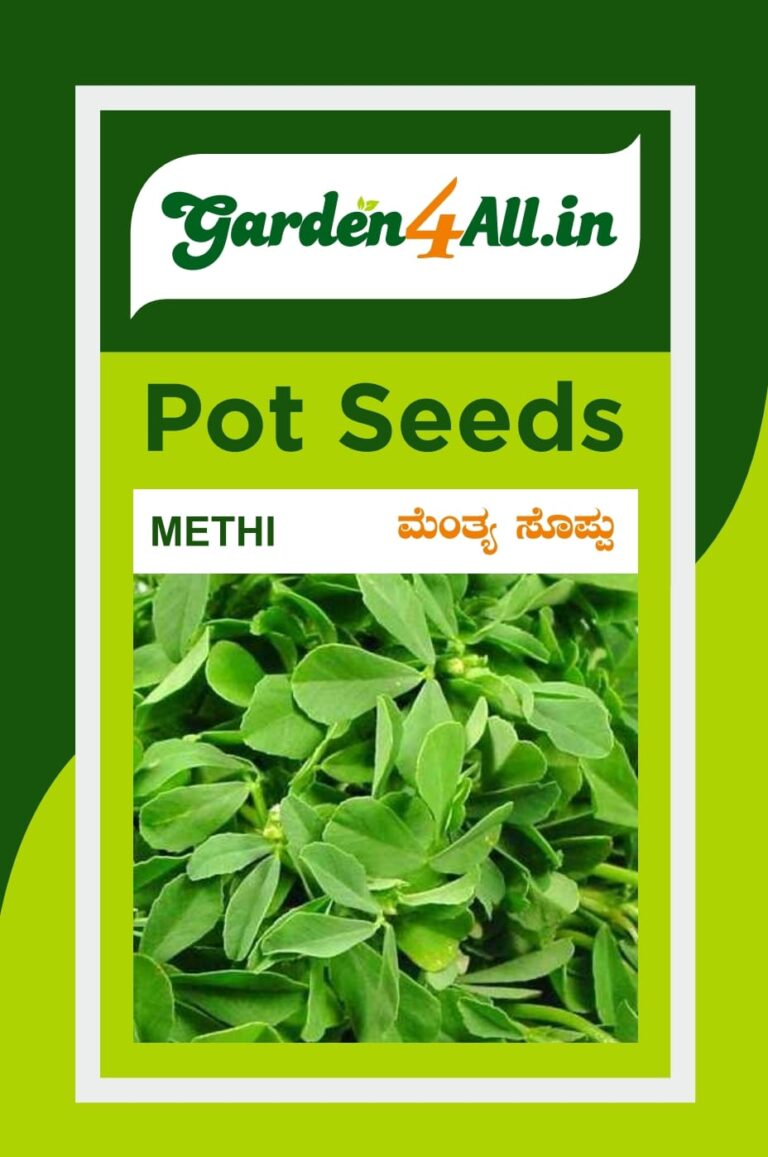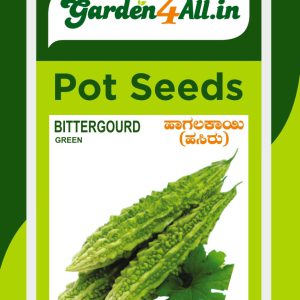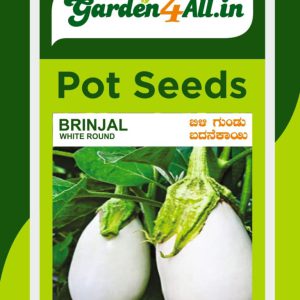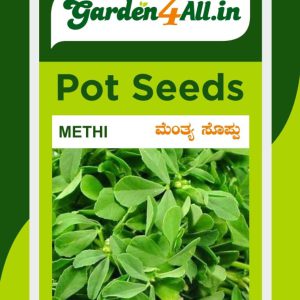Methi Seeds (Fenugreek – Trigonella foenum-graecum)
Methi Seeds, Growing methi is a rewarding and easy process, whether for its aromatic leaves or its nutritious seeds. With proper care, including regular watering and pest management, you’ll have a bountiful harvest of this versatile herb for your kitchen and garden.
- Estimated Delivery : Up to 3 business days
- Free Shipping & Returns : On all orders over ₹550 in Bangalore
Methi Seeds, Methi, or fenugreek, is an herb widely grown for its leaves and seeds, both of which are used in culinary and medicinal applications.
1. Seed Selection
• Choose high-quality, disease-free seeds from a trusted source.
• Look for varieties best suited to your local growing conditions or personal preferences, whether for leafy greens or seeds.
2. Planting Time
• Plant methi seeds in early spring or fall when the temperature is between 50-90°F (10-32°C).
• Methi can be grown year-round in tropical climates, but cooler seasons produce better results.
3. Soil Preparation
• Methi prefers well-draining, sandy loam or loamy soil rich in organic matter.
• Aim for a soil pH between 6.0 and 7.0.
• Mix in compost or well-rotted manure to improve soil fertility.
4. Seed Sowing
• Sow seeds ¼ inch deep and 1-2 inches apart, spacing rows about 12-18 inches apart.
• For dense foliage, plant the seeds more closely.
• Water the seeds immediately after sowing.
5. Germination
• Seeds typically germinate in 3-7 days under ideal conditions.
• Keep the soil moist during germination but avoid waterlogging.
6. Watering and Care
• Water the plants regularly to maintain moist soil but ensure proper drainage to prevent root rot.
• Thin out seedlings if they become overcrowded.
• Methi plants don’t require much maintenance but thrive with consistent moisture.
7. Fertilizing
• Methi doesn’t need heavy fertilizing. Apply a light organic fertilizer, like compost, before sowing.
• Avoid using high-nitrogen fertilizers, as they promote excessive leaf growth over seed production.
8. Pests and Diseases
• Monitor for aphids, mites, and caterpillars. Use neem oil or insecticidal soap to control infestations.
• Powdery mildew and root rot can be problems in poorly drained soils or humid conditions.
9. Harvesting
• Methi leaves can be harvested within 20-30 days after sowing when the plant is 6-8 inches tall.
• For seeds, allow the plants to mature, flower, and form seed pods, harvesting the pods when they are dry and brown.
10. Seed Saving
• Collect seeds from the dried pods once the plant has fully matured.
• Store seeds in a cool, dry place for future planting or culinary use.
Conclusion
Methi Seeds, Growing methi is a rewarding and easy process, whether for its aromatic leaves or its nutritious seeds. With proper care, including regular watering and pest management, you’ll have a bountiful harvest of this versatile herb for your kitchen and garden.









Reviews
There are no reviews yet.